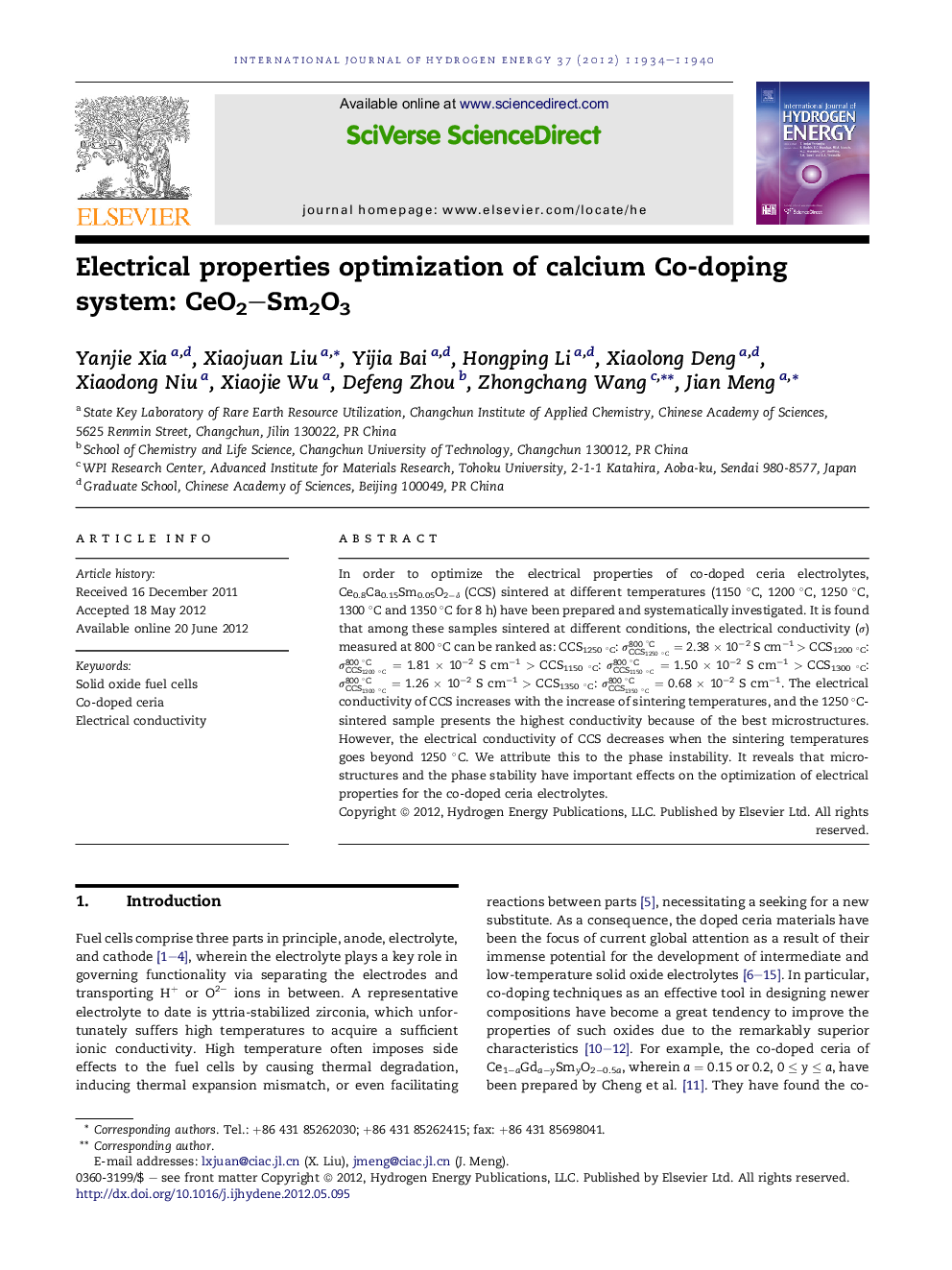| Article ID | Journal | Published Year | Pages | File Type |
|---|---|---|---|---|
| 1275062 | International Journal of Hydrogen Energy | 2012 | 7 Pages |
In order to optimize the electrical properties of co-doped ceria electrolytes, Ce0.8Ca0.15Sm0.05O2−δ (CCS) sintered at different temperatures (1150 °C, 1200 °C, 1250 °C, 1300 °C and 1350 °C for 8 h) have been prepared and systematically investigated. It is found that among these samples sintered at different conditions, the electrical conductivity (σ) measured at 800 °C can be ranked as: CCS1250 °C: σCCS1250°C800°C = 2.38 × 10−2 S cm−1 > CCS1200 °C: σCCS1200°C800°C = 1.81 × 10−2 S cm−1 > CCS1150 °C: σCCS1150°C800°C = 1.50 × 10−2 S cm−1 > CCS1300 °C: σCCS1300°C800°C = 1.26 × 10−2 S cm−1 > CCS1350 °C: σCCS1350°C800°C = 0.68 × 10−2 S cm−1. The electrical conductivity of CCS increases with the increase of sintering temperatures, and the 1250 °C-sintered sample presents the highest conductivity because of the best microstructures. However, the electrical conductivity of CCS decreases when the sintering temperatures goes beyond 1250 °C. We attribute this to the phase instability. It reveals that microstructures and the phase stability have important effects on the optimization of electrical properties for the co-doped ceria electrolytes.
► Microstructures could be tailored by controlling sintering temperature. ► Optimal electricity is obtained in co-doped ceria due to the best microstructures. ► Phase stability should be considered during the selection of sintering condition.
